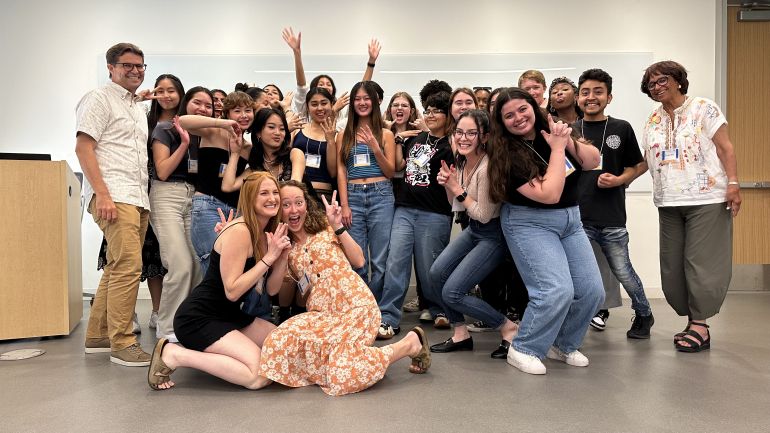This post was written by high school students from the Summer Research Boot Camp in the labs of Andrew Fuligni and Sandra Graham at UCLA, supported by UCLA Center for the Developing Adolescent, and led by Piper Harris, Naomi Kline, Xochitl Arlene Smola, and Ava Trimble.
By Megan Dinh, Zoe Ezeudu, Sage Gray, Taemin Han, Jianling Horton, and Madelene Natividad
During our second week of the UCLA Adolescent Development Summer Boot Camp, we participated in various activities regarding adolescent friendships. Adolescence encompasses a period of rapid brain development and the formation of an identity separate from parents. This is why friendships have a huge role during adolescence, allowing for autonomy and more self-discovery.
A friendship is an egalitarian relationship defined as a voluntary, positive bond between two or more people. Strong connections with peers can promote feelings of companionship, validation, intimacy, security, support, and stability – making friendships some of the most important relationships in the adolescent years. For example, friendships hold the highest value in terms of self-disclosure (sharing personal information) throughout most of adolescence. During the Boot Camp we learned that from grade six until young adulthood, self-disclosure to peers tends to take precedence over self-disclosure to parents and romantic partners, indicating a higher level of dependence and trust in friendships compared to other relationships.
When we reflected on how we made friends in earlier years, such as in elementary school, we saw that propinquity played a large factor in who we made friends with. Propinquity describes how friendships are formed with people who are readily available, through proximity or frequency of seeing each other. We also discussed homophily, which is another factor that affects who we make friends with. Homophily describes how people are more likely to form friendships with those who are similar to ourselves. At earlier ages, similarity is typically observed as shared gender, age, and race. Children usually tend to focus on factors such as gender and ethnicity when making friends because friendships at that age are generally more superficial. However, as time goes on, homophily takes the form of less surface-level things such as shared interests or similar political standpoints. We start to focus more on other factors such as similar morals, values, personalities, interests, and experiences as friendships serve as a source of emotional support and intimacy.


